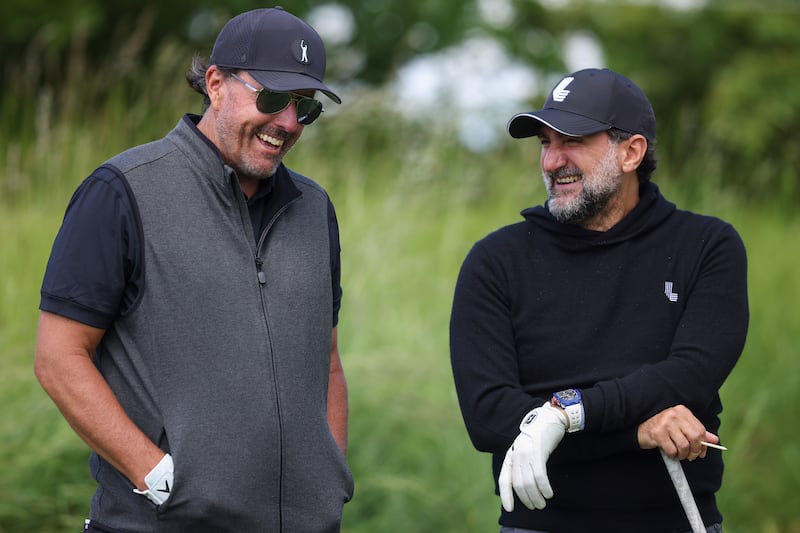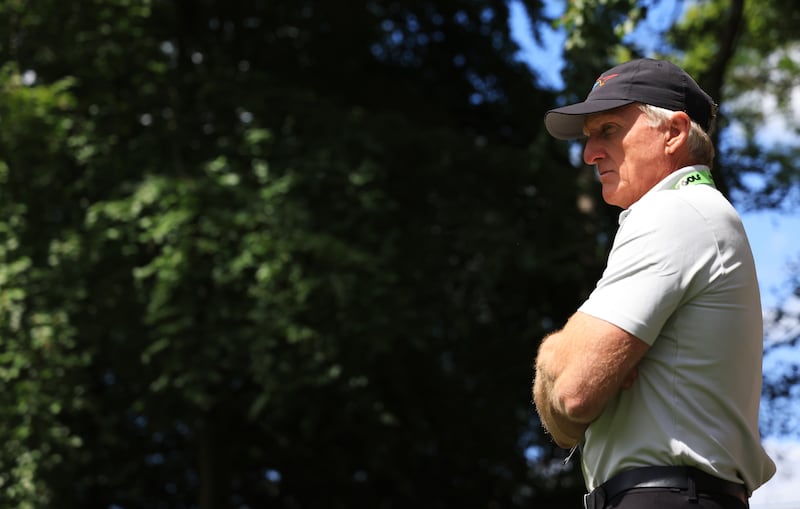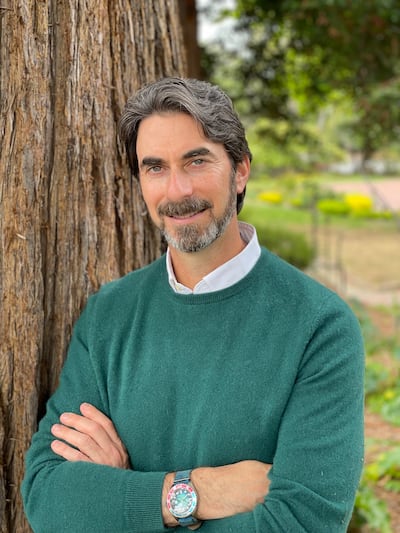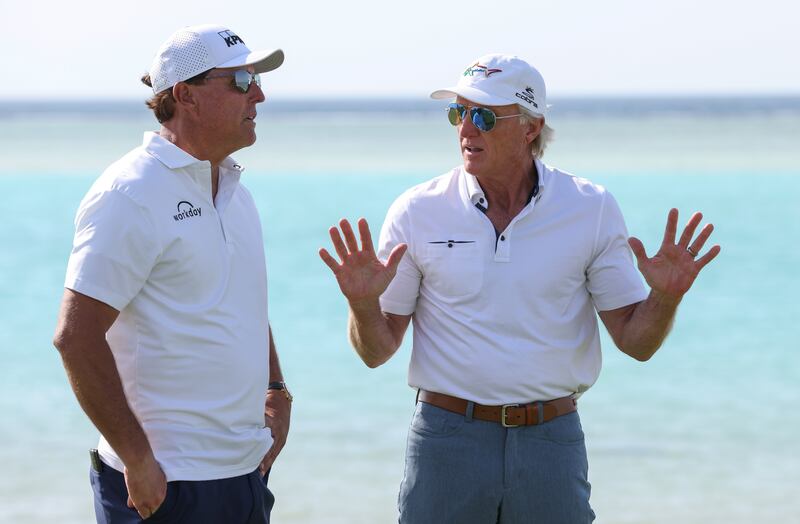Alan Shipnuck hadn’t intended to write a book about LIV Golf. Never mind that, he hadn’t even intended going along to watch. When the first tournament took place just outside London in June 2022, he wasn’t overly pushed about being there. It was the start of the summer and he wanted to hang out with his kids in California before heading off to cover the US Open in Boston the following week.
But then Phil Mickelson confirmed that he would be ending his four-month absence from the game by teeing it up at the first LIV event and basically left Shipnuck with no option. After all, he had been germane to Mickelson’s exile, running a story quoting him as calling the Saudi backers of LIV Golf “scary motherf**kers” that February. He couldn’t not be there to see what the return looked like.
“That London event was incredibly impressive,” Shipnuck says now. “I was like, ‘Wow, this is a bigger deal than I expected.’ They had this incredible three-storey luxury suite that was packed. And the whole thing was like ‘Jeez, these guys are not messing around. This does not feel small time.’ I just picked up the energy. I was like, ‘Okay, this thing is here to stay.’
“And then it was at that event I got bounced out by the security guys. And it led to that picture of Greg Norman looming over me like the Grim Reaper, which became a thing that went everywhere. So I was just like, ‘This is too good a story.’ On the flight back to the US I sent a note to my agent saying I think there’s a book here. And he was like, ‘Oh, funny, you should say that…’”
READ MORE

And who better to write it? Over the course of a 30-year career, Shipnuck has become one of the best – and certainly best-known – golf writers in the United States. He spent 24 years in Sports Illustrated, then had a brief spell at Golf.com before leaving to set up The Firepit Collective. He has always stayed just close enough to the porcelain egos of pro golf to mine good stories from them and yet far enough away that he will happily piss them off when he has to.
And so, LIV And Let Die was born. Everybody is in here, from Rory McIlroy and the PGA Tour on one side to Mickelson, Greg Norman and the Saudis on the other. It’s so rare that a global sport sunders itself in front of the watching world – Shipnuck’s book is as thorough and lively a first draft of this slice of golf history as you’re going to find anywhere.
“I think what people who follow this story want is to understand it on a granular level,” he says. “That’s what my role in this is. Everything happened in secret. Every negotiation, every deal, every betrayal, every time the money moved around. There was never a press release, there was never a press conference. No one talked about it.

“I felt like my job was to take everything from the shadows and shine some sunlight on it. So fans and stakeholders in the game could really understand how we got to this incredibly complex, divisive moment.”
Of course, the LIV breakaway is so ripe for storytelling precisely because it’s so divisive. If you have any bit of interest in pro golf, you’ll have long since picked a side. Chances are, you’ll have very little interest in even hearing from the other side. But nothing is ever that simple. Nobody is all good or all bad.
“Greg Norman makes a good bad guy,” Shipnuck says. “Dan Jenkins had the famous line, ‘He looks like the guy they send to kill James Bond.’ And he’s got this massive ego. He’s been raging against the machine for three decades. So, perfect bad guy.
“I spent a lot of time reading about him and talking to people around him. And it’s like he’s always had this hole that he couldn’t fill, no matter what he accomplished. The guy’s got everything – he’s obviously fabulously wealthy, incredibly good looking. He’s a Hall of Fame golfer. Why can’t he just be happy?

“He had this incredibly cold, complex relationship with his dad. After he boots away the 1996 Masters, the biggest choke job in the history of golf, he goes into the clubhouse and he tells them about that hug he got from Nick Faldo. He said it was the best hug of his life and that his dad never hugged him. And you’re like, ‘Oh my god, this guy has blown up professional golf because his dad wouldn’t hug him!’ It’s unbelievable. But it’s also so human.
“Even if you take Rory, who is the good guy, he’s the hero of the story in most people’s minds because he’s been such a passionate advocate for the tour. But he has taken all kinds of personal shots. This had been a business thing and he made it very personal. And so it makes him a more complex character.
“What I like about the story is that two or three things can be true at once. Does Rory love the PGA Tour and care about it? Yes. Did he enjoy giving the middle finger to Greg Norman and Phil Mickelson and all the other guys? Yes. Is he playing for trophies? And does he care about his legacy? Yes. Is he trying to protect his revenue streams? Yes. It’s really fascinating how layered and nuanced all these characters are.”
At the heart of it all is the presence of the Saudis and all their petro-wealth and all their human rights abuses and all the rest of it. Indeed, maybe the most galling thing about LIV Golf as it has developed over the past 18 months is how little of the conversation surrounds that stuff any more.
All anyone talks about now is golf politics – who will win between the PGA Tour and LIV, how will the proposed merger work out, how long will the Official Golf World Rankings refuse to recognise LIV players. Nobody has brought up Jamal Khashoggi in a very long time.

“The insidious thing about sportswashing is that it works. Fatigue sets in. The reporters get tired of asking the same questions, the players get tired of answering those questions, the fans start to tune out the noise. That’s the normalising aspect of sportswashing that its sponsors are counting on.
“In early 2023, Bryson [DeChambeau] was asked a question about it and he was like, ‘Oh, we talked about that last year. We’re done talking about it.’ It was striking how quickly people let that go when it was so fundamental to the conversation.”
The world turns. Shipnuck filed his last edit on the book on June 5th of this year. On June 6th, the tectonic plates under golf shifted again, with the news that the PGA Tour and the Saudis had secretly put the beginnings of a deal in place. Five months down the track, nobody is any closer to knowing what that deal will look like or whether it will even happen. In the immediate term, it meant Shipnuck had a (new) closing chapter to write. Longer term, who can guess what it means? Everything is volatile, always.
[ Graeme McDowell’s LIV place is in peril – was it all worth it?Opens in new window ]
[ LIV Golf: All relatively quiet on the publicity front but golf still in the roughOpens in new window ]
“It’s incredible to think that what’s happening in Israel and Gaza could somehow affect professional golf,” he says. “It makes no sense on the surface. But in the wake of the attacks, the PGA Tour put out a statement that basically affirmed its support for Israel. And very shortly thereafter, Mohammed bin Salman very publicly backed Palestine.
“It just throws into sharp relief that these two entities, the PIF and the PGA Tour, come from very different cultures. They have very different value systems and they see the world very differently.
“It just made it that much harder to consummate this deal because it was a reminder that the PIF and the Saudi Arabian regime have a very different attitude about a lot of things. It’s not going to be easy to partner over the long term. On the list of what’s important in the Middle East right now, golf was not even on the list, but it was just a reminder that none of this is simple.”

Irish readers have plenty to detain them in the book. McIlroy is a key figure throughout but Graeme McDowell had his moment in the klieg lights too. Everyone cringed as he went down in flames at that opening press conference in June 2022. Shipnuck chased him for months to try to get him to talk about it and when he eventually caught up with him, he found a guy who had been worn down by everything from online abuse to death threats.
“It affected him for a long time. Even on the golf course, his sense of self was so diminished because he’d always been celebrated and beloved. And now he was the bad guy. That’s a tough flip in a player’s self image. Phil’s used to being this anti-hero. So was Bryson. So was Patrick Reed and certainly Garcia and Brooks. To quote Peter Jacobson, it can’t be a coincidence that all the assholes went to LIV. But Graeme would not fall into that category.
“The heat has dissipated a little bit and he looks like he’s having fun out there now. But it was tough to watch. He was suffering. He was at the JP McManus Pro-Am, which was always a great event for Graeme – a feel-good tournament, everyone’s in a great mood, very celebratory. But he was just a shell of himself. He wouldn’t make eye contact with anyone because he was coming in hot, right after those comments essentially. And so it’s tough. There was a physical, emotional and a spiritual toll for a lot of these guys who went over there.”
Nothing is simple. Everything has nuance and shades of grey. Even something as nakedly rotten as LIV Golf.
♦ Liv and Let Die by Alan Shipnuck, is published by Simon and Schuster and available in all bookshops.






















